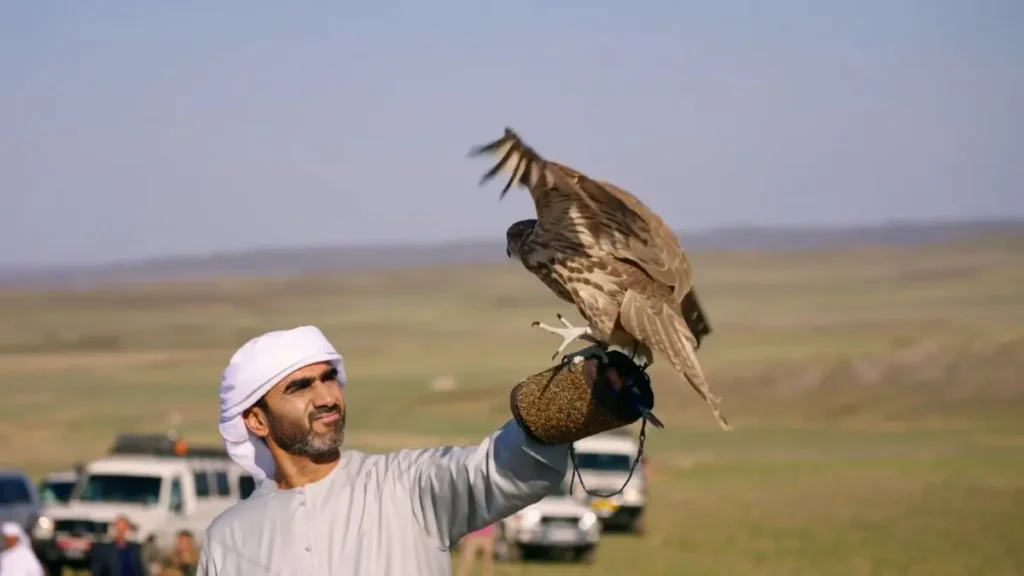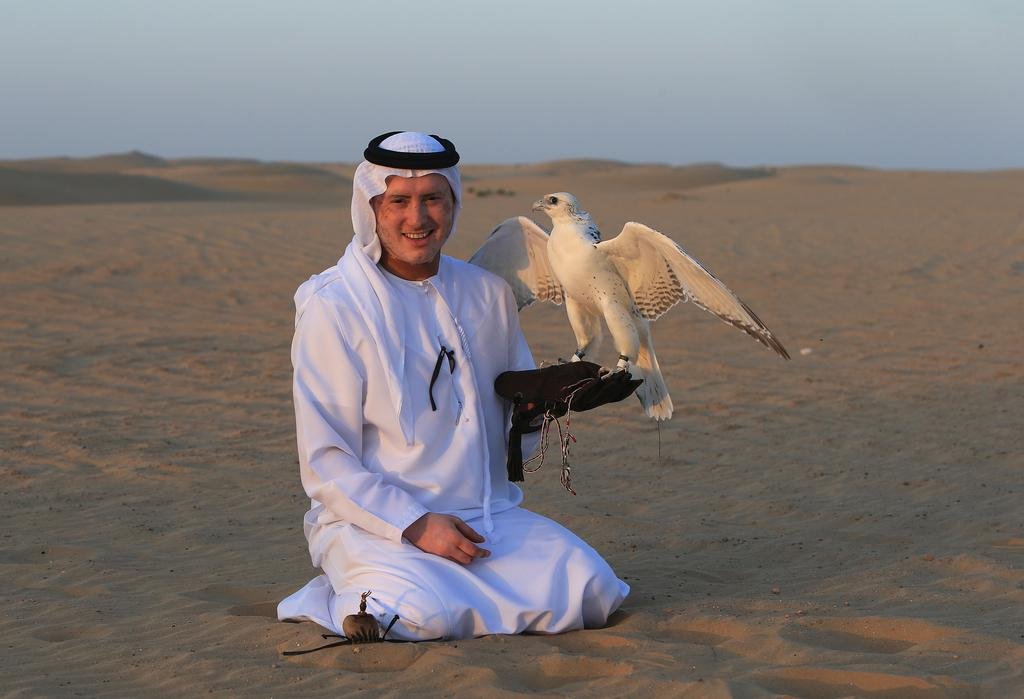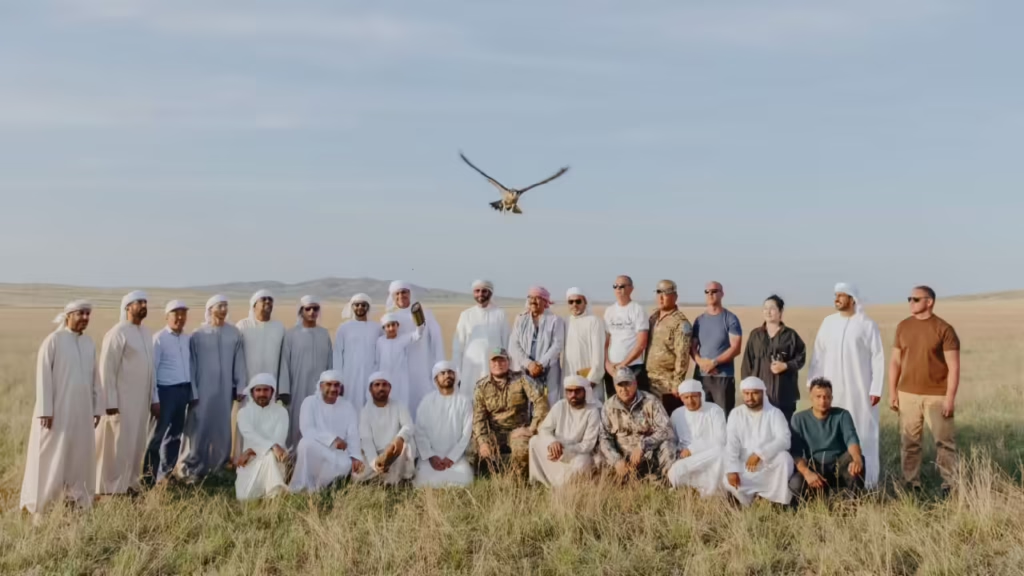The UAE falcon conservation program has reached a new milestone by expanding into Kazakhstan. This move represents more than just a geographic extension; it symbolizes a powerful collaboration between two nations with deep roots in falconry. While falcons have long played a central role in the cultural identity of both the UAE and Kazakhstan, modern conservation efforts now seek to ensure that this ancient tradition thrives in a rapidly changing world.
In this article, we explore how this initiative bridges tradition and modern science, the significance of falconry in both cultures, and the broader environmental and ecological benefits of such conservation efforts.
The Roots of Falconry in UAE and Kazakhstan
Falconry is more than a sport in the UAE and Kazakhstan; it’s a treasured cultural heritage. In the UAE, falcons are seen as noble animals symbolizing courage, patience, and freedom. They have been used for hunting for over 4,000 years and are so revered that they even appear on Emirati currency. Falconry was inscribed in UNESCO’s Representative List of the Intangible Cultural Heritage of Humanity in 2010.

In Kazakhstan, falconry is a centuries-old tradition as well. Known locally as berkutchi when involving golden eagles, traditional falconry is deeply woven into the identity of the Kazakh nomadic tribes. These birds were not only hunting partners but were seen as spiritual allies.
With the pressures of modern development and environmental degradation, both nations have realized the need to protect this legacy not just for cultural reasons, but also for biodiversity conservation.
The UAE Falcon Conservation Program: An Overview
The UAE falcon conservation program was initially created to protect the endangered Saker falcon and the Peregrine falcon, two species widely used in falconry. The program, led by the Abu Dhabi-based International Fund for Houbara Conservation (IFHC) and supported by the Mohamed bin Zayed Raptor Conservation Fund, focuses on
- Breeding falcons in captivity and releasing them into the wild to strengthen wild populations
- Using GPS telemetry to monitor falcon migration routes and behaviors
- Providing specialized falcon hospitals for injured or sick birds
- Promoting sustainable falconry practices among hunters and enthusiasts
So far, the program has successfully bred and released thousands of falcons, making it one of the world’s leading conservation models for birds of prey.
Why Kazakhstan? The Perfect Partner for Conservation
Kazakhstan’s vast steppes, mountains, and deserts provide an ideal habitat for many raptors, including Saker falcons. In fact, many falcons that migrate through the UAE have breeding grounds in Central Asia, making Kazakhstan a critical region for their survival.
Recognizing this ecological link, the UAE partnered with Kazakhstan’s Ministry of Ecology and Natural Resources. This partnership allows both countries to work together in
- Falcon breeding and rehabilitation programs
- Habitat restoration projects
- Anti-poaching and trafficking enforcement
- Promoting traditional falconry in a sustainable and regulated way
Dr. Majid Al Mansouri, Secretary General of the Emirates Falconers Club, stated, “This partnership is not just about falcons. It’s about preserving a shared heritage, restoring ecosystems, and educating future generations.”

Bridging Tradition and Technology
What makes the UAE falcon conservation program unique is its integration of modern science with cultural heritage. In Kazakhstan, this means using advanced tools like
- Satellite tracking systems to follow falcon migration across thousands of kilometers
- DNA analysis to study the genetic diversity of falcon populations
- Artificial nesting platforms to improve breeding success rates in the wild
- Mobile veterinary clinics to provide care in remote locations
Meanwhile, local falconers are being trained in sustainable hunting practices, falcon health management, and conservation ethics. Workshops and joint training sessions are being held for Kazakh and Emirati falconers, creating a shared knowledge base that merges centuries of experience with cutting-edge science.
Environmental and Economic Benefits
The program’s impact goes beyond falcons. By focusing on the broader ecosystem, it also helps
- Restore prey populations like the houbara bustard, another species under threat
- Combat illegal wildlife trade, particularly trafficking of raptors across borders
- Create ecotourism opportunities in rural Kazakh communities, offering birdwatching tours, cultural experiences, and local employment
- Improve land management practices, including the reduction of pesticide use that can harm raptors and their prey
This blend of environmental care and economic development offers a model for conservation programs worldwide.
Challenges and How They’re Being Tackled
Despite the program’s success, challenges remain
- Illegal trapping and trade of falcons still occurs in some regions
- Habitat destruction due to agriculture, mining, and urbanization continues to threaten nesting areas
- Climate change alters migration patterns and food availability
To combat these, the UAE and Kazakhstan have introduced
- Stricter border inspections and penalties for illegal wildlife trade
- Cross-border tracking systems to monitor falcon movement and reduce losses
- Public awareness campaigns to educate rural communities on falcon protection
By engaging local populations and investing in education, the program is not just enforcing rules but creating community guardianship for wildlife.
Voices from the Field
Kairat, a third-generation Kazakh falconer, shared his excitement
“Our family has hunted with falcons for over 100 years. But we also know their numbers are falling. Working with the UAE team taught us how to care for the birds better, and how to make sure my children can do what I do one day.”
Similarly, Fatima Al Shamsi, a conservationist from Abu Dhabi, noted
“Seeing the steppes of Kazakhstan and watching falcons fly freely there—it’s emotional. These birds connect us across thousands of kilometers and centuries of history.”

A Model for International Cooperation
The expansion of the UAE falcon conservation program into Kazakhstan sets a global example of how environmental issues can be tackled through partnerships. It’s not just about saving birds; it’s about preserving identities, nurturing ecosystems, and building bridges between cultures.
International bodies like the UN and IUCN have praised the initiative, highlighting it as a model of eco-diplomacy where shared environmental goals foster stronger international relations.
Looking Ahead: What’s Next for the Program?
Plans are already underway to expand the program further into neighboring Central Asian countries such as Uzbekistan and Kyrgyzstan, which also have deep falconry traditions and suitable habitats.
Future goals include
- Establishing regional falcon conservation centers
- Developing school curriculums around wildlife conservation and falconry
- Digitizing falcon tracking data for global research access
- Hosting international falconry festivals to celebrate and promote sustainable practices
Conclusion
The UAE falcon conservation program’s expansion into Kazakhstan marks a hopeful chapter in wildlife conservation. It combines respect for ancient traditions with the best of modern science, proving that cultural heritage and environmental stewardship can go hand in hand.
By protecting falcons, we protect more than just a species; we preserve stories, landscapes, and a way of life that has soared across skies for thousands of years.
Do follow UAE Stories on Instagram
Read More: Curated Playlist Dubai Returns This October with a Family Twist













